Get PeakVisor App
Sign In
Search by GPS coordinates
- Latitude
- ° ' ''
- Longitude
- ° ' ''
- Units of Length

Yes
Cancel
Share ×

Scan the QR code and open PeakVisor on your phone
❤ Wishlist ×
Choose
Delete
Koli National Park is one of Finland’s four main national parks, located in the east of the country in the North Karelia region. The main feature of the park is the view on the giant lake from its three peaks of the same name—the highest in Southern Finland. This landscape is included in the list of 27 national landscapes of the country. In total, there are 7 named mountains in Koli National Park. The highest and the most prominent mountain is Ukko-Koli (347 m / 1,138 ft).
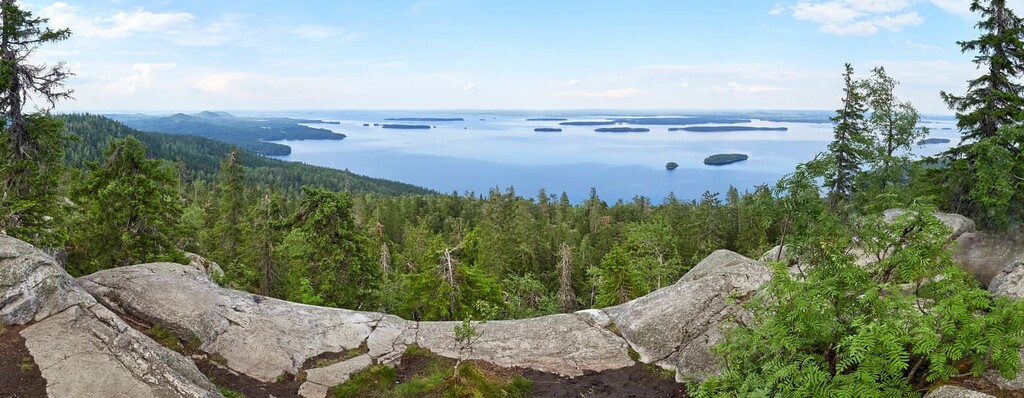
The park is named after its highest mountain, Koli, which consists of three peaks. In addition to Ukko-Koli, these are also Akka-Koli (338 m / 1,109 ft) and Paha-Koli (331 m / 1,086 ft). The park was founded relatively recently, in 1991, but the name far predates the establishment of the park itself.
All three peaks are named after pagan gods worshipped by ancient inhabitants of this place, who lived here before the arrival of the Finno-Ugric tribes from the eastern edges of Europe. The hills were considered holy places, where the gods lived. People made ritual sacrifices to the gods in the hope of successful hunting or fishing.
The name of the park in Finnish is Kolin kansallispuisto.
The Koli National Park is located in Eastern Finland in the region of North Karelia in the three municipalities: Joensuu, Kontiolahti, and Lieksa, on the eastern shore of Lake Pielinen.
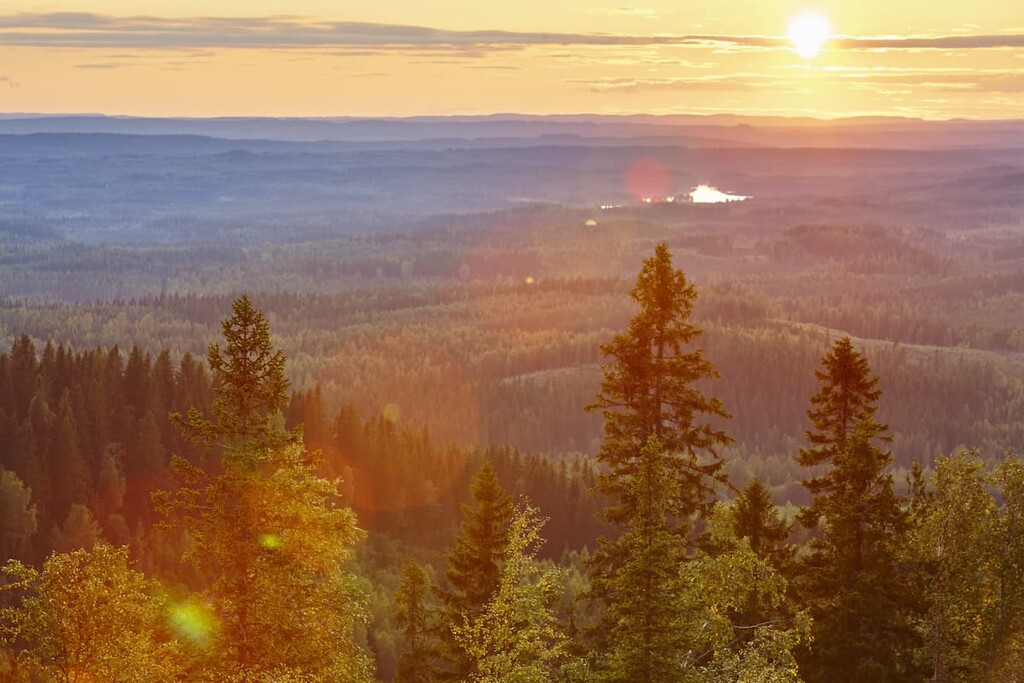
This region is also often called the “Lake Land” because the vast majority of Finland’s 190,000 lakes are located in this area. It is also one of the four major tourist regions of the country, along with the Helsinki capital region in the south, the Archipelago Sea in the south-west, and Lapland in the north.
The total area of the park is 30 sq. km (11.5 sq. mi). If you look at its map, you can see that it extends from north-north-west to south-south-east.
The park is divided into two roughly equal parts: a smaller northern part, where all its hills are located, and a slightly larger southern and mostly flat part. I personally really like such long parks. I immediately get the thought, “How cool it is: You can walk from hut to hut through the whole park (from one camping site to another).” That’s what I did in May 2016 in Koli.
The closest major city to the park is Joensuu, the capital of North Karelia. I hitchhiked here from Petrozavodsk, the capital of the Russian part of Karelia, but it’s just as easy and quick to get here from Helsinki by car, bus (regular Matkahuolto and budget OnniBus), or VR train.
In the first case, the road to Koli Nature Center Ukko, which is also its visitor center, will take you about 6 to 6.5 hours (it is approximately 500 km / 310 m long) by car and a little bit longer by public transport.
Either way, you are unlikely to make the journey in one day. You can spend the night in Joensuu, and in the morning take a bus to the bus stop Ahmovaara, the closest stop to the park.
In fact, there is bus service all year round in the region. From the bus stop, you can walk 10 km (6.2 mi) to the visitor center and to the park’s famous hills. You can go on foot along the asphalt and quite a scenic road, or you can catch a car or take a shuttle bus, the latter of which will take you to the park for around €20.
If you walk, in the middle of the journey there is a large lake, where you can relax. But, I recommend that you save your energy for hiking in the park and hitchhike to it or take a shuttle.
Remember that there is also a small grocery store and café at the Ahmovaara stop, where you can do one last grocery shop before escaping civilization for a few days. Do note that there are no stores in the park, though there are a few cafés that are located very far away from each other—so I wouldn’t count on them as your sole source of sustenance.

The Ahmovaara is the main entry point into the park, but there are others. You can also access the park’s main trails from the Pirunkirkko, Seppälä-Lakkala, Ryläys and Kiviniemi parking areas.
Finally, after you arrive in the park, a small cable car (funicular) takes you to the top of the famous Koli hills from the main parking area. You will arrive here by following the signs “Koli Visitor Center”, “Ukko-Koli” and similar on the road.
You may be interested in other nearby nature areas, too, during your visit. Some of the nearby nature areas include Ruunaa Hiking Area, Telkkamäki Nature Reserve, and Patvinsuo, Tilkkajärvi, and Petkeljärvi National Parks.
The chain of peaks in Koli National Park consists of two large geological layers. The first, the oldest, is a base of granite and gneiss. The second, younger by about a billion years, is Karelian shale. The Koli rocks themselves, which we can see with our own eyes, consist mainly of quartz.
The total age of these rocks is from 1.5 to 3 billion years and, as such, they are some of the oldest rocks in Europe. These rocks are also evidence of the retreat of a glacier that once covered the whole of northern Europe.

Despite their tiny height compared to the Alps and other high mountains, in my opinion, the hills of Finland are no less impressive. They are just as interesting to climb and study.
The main feature of the park’s landscape is the chain of hills from which you can enjoy a stunning view of the giant Pielinen Lake (fourth-largest lake in Finland after Saimaa, Päijänne, and Inari). You can also see many small rocky islands (also known as skerries), such as Kelvänsaari, Mantina, Hiekkasaaret, Rääkkyy, Murtosaari, and the long island Purjesaari, which looks like a needle.
But there is another large lake, known as Herajärvi Lake, that’s located along the entire south-western part of the park. The park’s main multi-day trail is also called and runs around the lake. The northern part of the park also has its own lake, Jeronjärvi.
The hills are located in the northern part of the park, while the southern part is mostly flat with small hills. This diverse landscape makes the experience of hiking in the park quite pleasant and interesting.
Koli National Park also has some wetlands in the southern part. Be prepared to walk a couple of kilometers on trails paved with wooden planks that the park staff has created just for hikers. However, these trails are not all new and in good condition. So, be careful as you walk to help ensure that you don’t fall through the wooden planks!
There are also several caves in the Koli National Park. The most famous cave is called the “Church of the Devil” (Pirunkirkko). It is located right at the top of Ukko-Koli. It is a narrow dark cave at a depth of 34 m (112 ft). There is also a famous cleft in the Uhrihalkeama rock, in which, according to legends of the ancient Karelians, an evil spirit also lived.
Speaking of the scenery of Koli, it’s worth mentioning that it’s not exactly a wilderness national park. Since the seventeenth century, the area was actively used for slash-and-burn agriculture. This way of agriculture is even shown on the logo of the park, which pictures a mix of slash-and-burn agricultural lands and a birch forest at sunset overlooking the region’s famous hills.
People grew rye in Koli, which was once Finland's main export product. The inhabitants of this region were also engaged in fishing, hunting, and cattle ranching. There are several themed nature trails in the park, too, where you can see how people lived in this area in the past and how they live today in the old farms Ollila and Mattila, which are specially preserved.
The whole of this landscape is considered one of 27 national landscapes of Finland. The list also includes similar hills in Lapland, as well as the Helsinki sea view, among others.
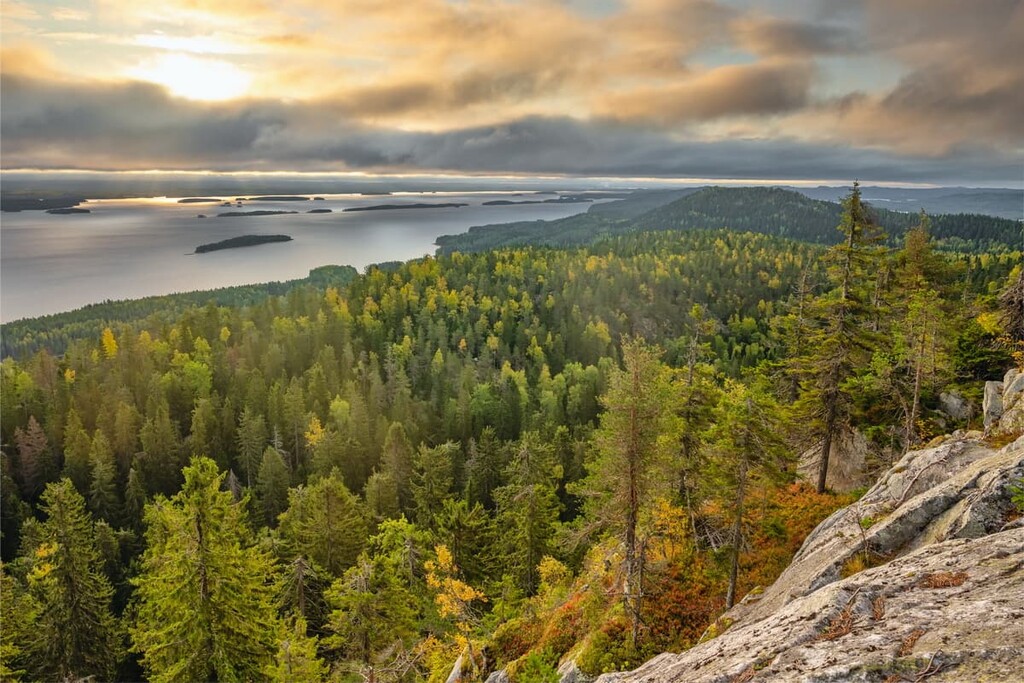
Throughout its history, this area has attracted many creative people who came to the region seeking inspiration. This includes the world-famous Finnish composer Jean Sibelius, journalist Juhani Aho, and painter Eero Järnefelt.
Both parts of the park are covered with dense pine, spruce, birch, and mixed forests of incredible beauty. If there is any real forest of the fairytale Karelian forests from the main Finnish epic Kalevala, this is it.
In the forests and in the meadows of the park, you can find such plants as marsh thistle, meadowsweet, moonwort fens, stiff-straw mat grass, mountain everlasting, maiden pink, and mouse-ear hawkweed, and many others. In fact, there are a total of 596 plant species in the park.
From mid July to late October, the forests of the park are also full of edible berries and mushrooms. You’re welcome to pick and eat as many of these berries and mushrooms as you please.
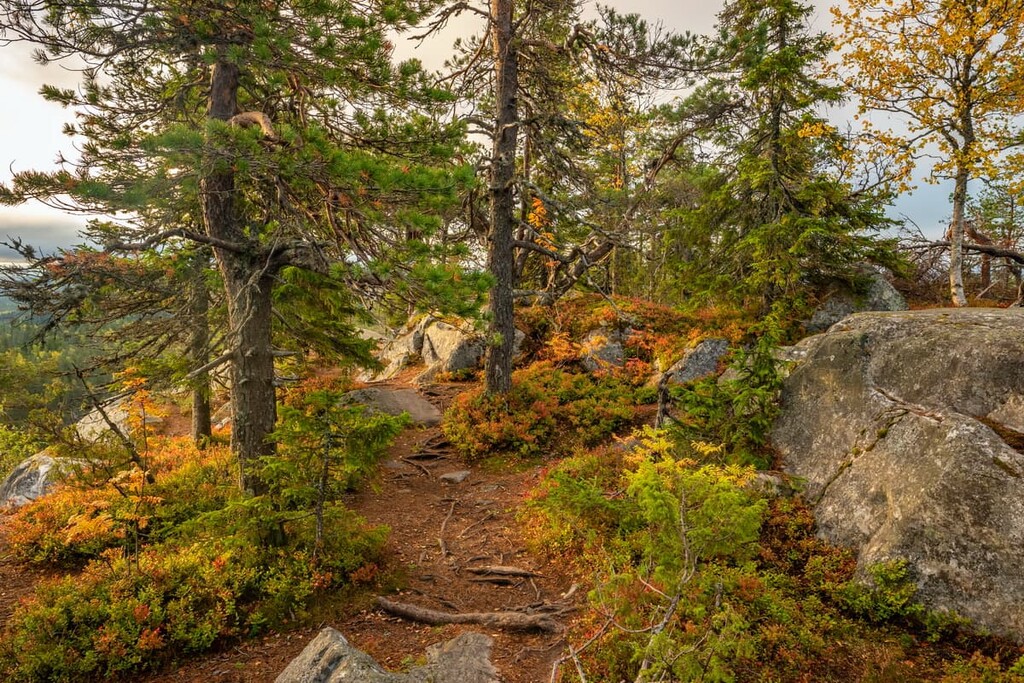
Over the years, at least 4,078 different animal species have been sighted in the Koli National Park. The park’s forests are home to flying squirrels, martens, ermines, hares, lynxes, elks, and even bears. There are also rare species, such as the forest lemming and the endangered crested newt. In all, there are 26 big animal species.
Many birds can be seen here, such as the grouse, ruffed grouse, osprey, red-flanked bluetails, and lesser black-backed gulls, and others. In total, there are 148 different types of birds in the park.
In the lakes, there are vendace, whitefish, pike, and perch, among many other fish, for a total of 11 species.
There are also more than 717 species of butterflies and hundreds of other insects. In particular, from May to the end of July, the park, like everywhere else in the north, is full of mosquitoes. When you go to the park during this time, be sure to wear tight clothing with long sleeves and pants, and a hat.
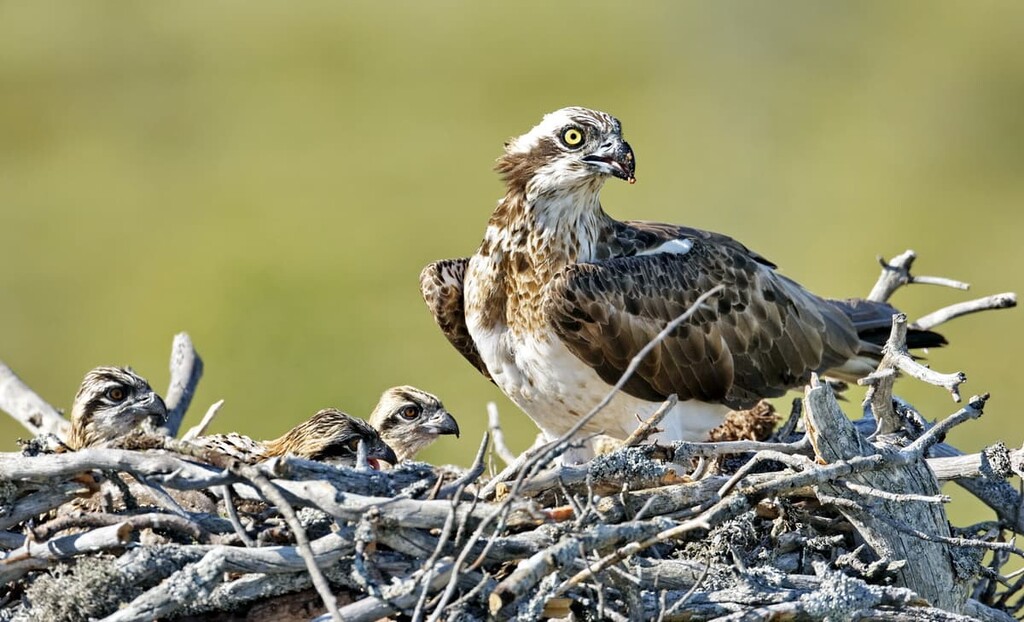
Mosquitoes are especially plentiful in windless weather on marshes and lakes. For example, on one of my days in the park, there were so many mosquitoes that I had to crawl into my tent to escape them. I sat in it for half the day until the wind came up and moved them all away.
Snakes can also be found on the trails, some of which are venomous. So, be careful and try not to disturb the snakes as you hike.
The low peaks of Koli are nevertheless the highest not only in Karelia, but also in Southern Finland, and (or rather, 2–3 billion years ago) they were once the highest mountains in Europe with elevations up to around 5,000 meters (16,404 ft).
This ancient range was called the Karelides. In the past, this range was not inferior in grandeur to the Alps, where the highest peak is Mont Blanc (4,807 m / 15,774 ft).
The Karelides stretched from the south of Finnish Karelia to the northernmost regions of Lapland, where the remains of these mountains take the form of numerous hills. These hills are about 1,000 m (3,280 ft) in elevation on average and they currently “collide” with the Scandinavian Mountains.
But, let’s return to the present-day attractions of the park. There are three high peaks located here besides those of Koli, but they are located a short distance away from the three main and most famous Koli hills.
These are separate hills include Ipati (315 m / 1,033 ft) and Savivaara (185 m / 607 ft) in the northern part of the park. Meanwhile, the more distant Mäkrä hill (306 m / 1,004 ft) is about three kilometers (1.8 mi) to the south along the park’s main trail.
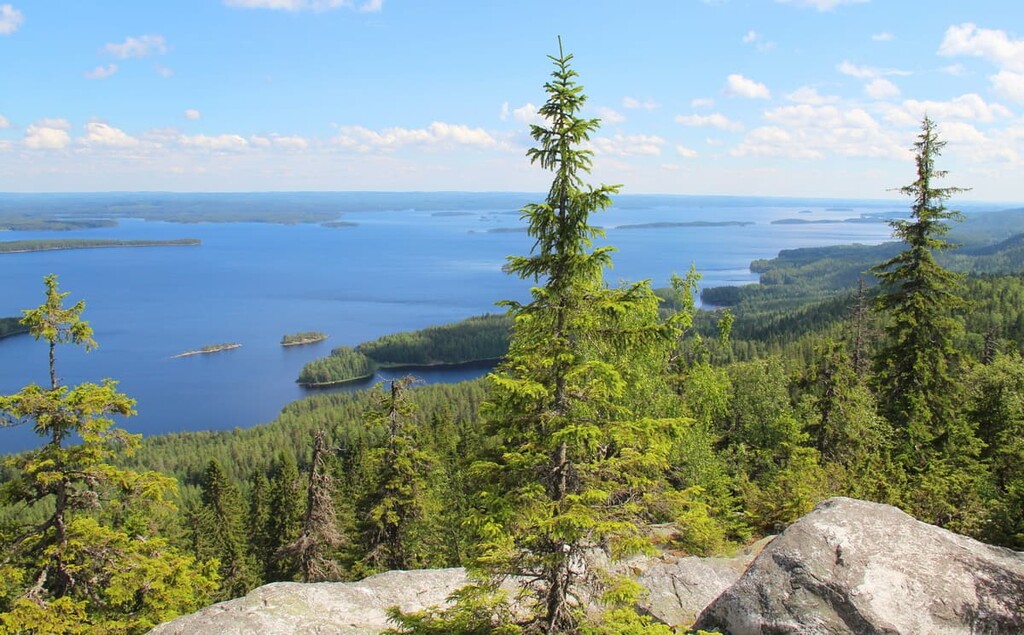
There are 80 km (49.7 mi) of marked hiking trails of varying lengths in the Koli National Park. Up next, I will tell you about the three main trails.
Huippujen kierros is a simple, short, and beautiful trail that takes you on a journey through the three main peaks of the region. It starts right at the visitor’s center and ends there as well. I even want to say that this trail can be walked two and three times in a row, similar to the way runners run laps in stadiums.
My top tip: If you come to the park from this side, take your time hiking it, because further in, the forest and the surrounding views will be increasingly “less” beautiful (in quotes, of course—the entire landscape is stunning). Spend one full day on the three peaks to enjoy the national Finnish landscapes to their fullest extent
There are also plenty of other short hiking trails around the three hills that you can enjoy on your travels to the region.
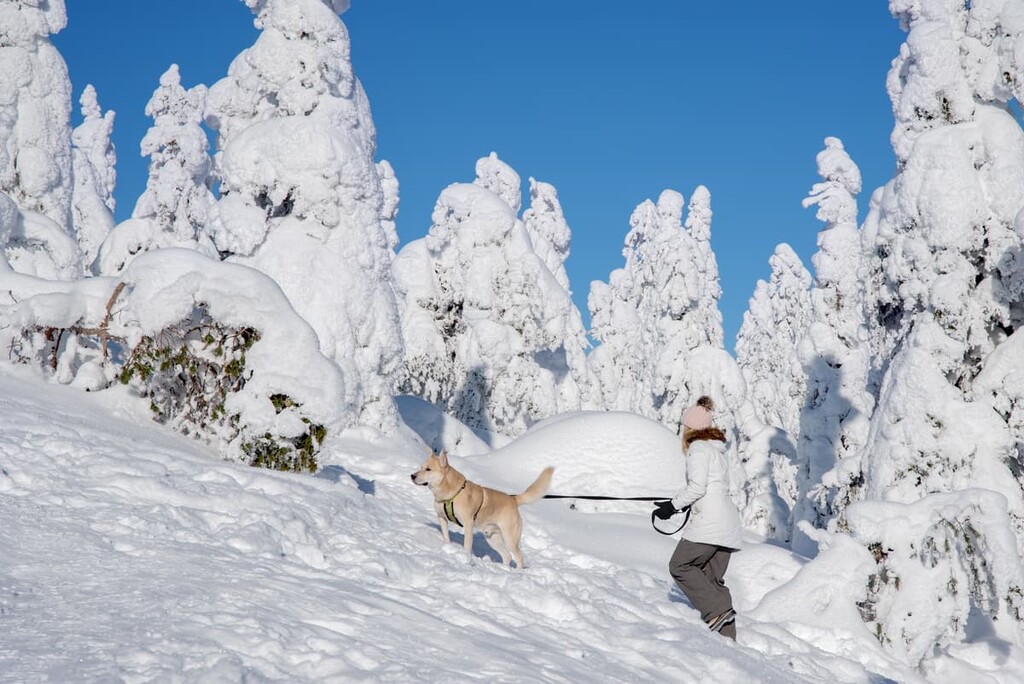
Mäkrän kierto is a hiking trail that takes you to the most remote hill in the park, Mäkrävaara. You shouldn’t ignore it in favor of the Koli hills because the view from its summit is no less magnificent. In fact, you will see not only the lake, but also the forest that you travel to in order to get to the summit.
From the three peaks of Koli, you can’t see how big the park is, on the contrary, it seems quite small. When you climb Mäkrä, however, you will appreciate its true scale.
I recommend this trail on your second or third day in the park, but you should also take your time on it, too. The forest here is also incredibly beautiful. When I got to the top, I wanted to sleep on it for the night. Too bad I was too lazy to take an extra look at the map and missed a place to pitch my tent nearby.
In any case, if I were to walk the trail again today, I would add 30 minutes or one hour to the route so that I can spend more time enjoying the summit.

The Herajärvi Trail is the park’s main and longest trail, and one of the most popular long trails in all of Finland together with Hetta–Pallas in Pallas-Yllästunturi National Park, Karhunkierros (The Bear's Trail) in Oulanka National Park, among others.
On the Herajärvi Trail, you’ll see all of the park’s attractions along the route, as well as a lot of wonderful attractions that aren’t in the guidebooks. In fact, the Herajärvi Trail is not one, but four trails, because it can be taken in four different ways:
In 2016, I took the fourth route from the visitor’s center to the camping on Rykiniemi Cape. I even took the trail a little bit further from its ending point and continued walking along the regional road to the nearest highway, from where I hitchhiked back to the city. The whole trip took me five days and four nights in the park. It was just incredible.
In addition to hiking and backpacking, in Koli National Park you can do other summer sports and outdoor activities. This includes horseback riding, fishing, birdwatching, picking berries and mushrooms, canoeing and rowing, sailing and boating, cycling, swimming, and even enjoying the sauna.
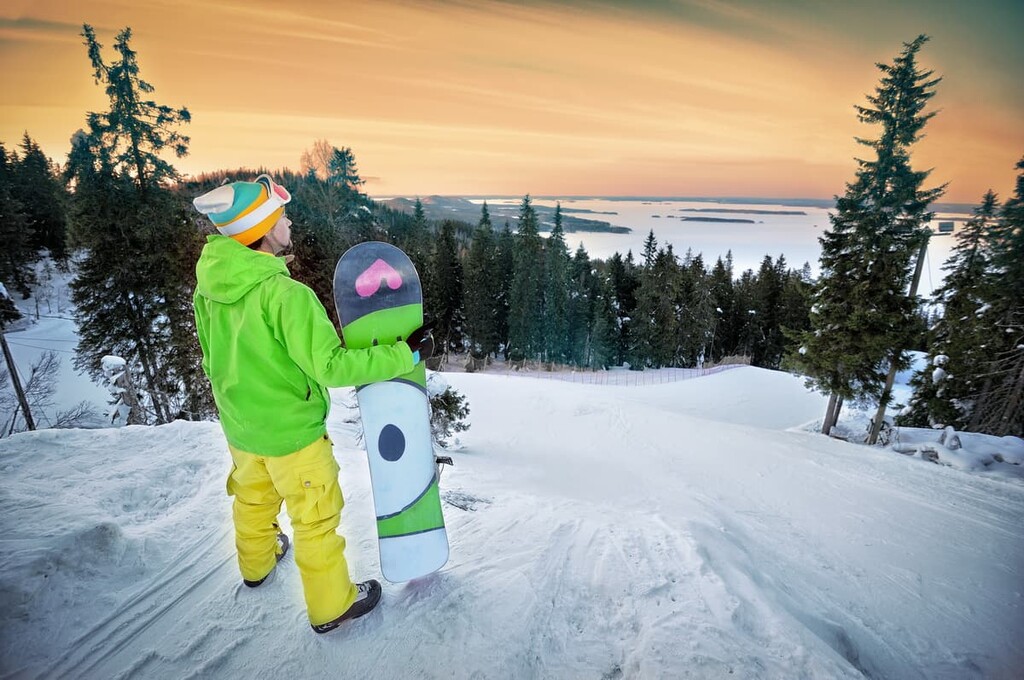
In winter, the national park turns into a small but very cozy ski resort with the same name. There are six slopes and three lifts for downhill skiers. The highest vertical drop is 230 m (750 ft). The ski slopes range from 800 to 1,500 m (2,600 to 4,900 ft) long.
Besides these downhill trails at the resort, there are more than 50 km (31 mi) of marked ski trails for both cross-country skiing and skate skiing. The shortest and easiest trail is three km (1.8 mi) long, the longest and most difficult is 22 km (13.6 mi).
If you have never tried skiing in your life or just don’t like it, you can go snowshoeing here, too. You can rent snowshoes right at the park visitor center and the park has marked routes of various lengths from about 1.5 to 4 km (0.9 to 2.4 mi).
The park’s visitor center is located right at the foot of its three main peaks. Furthermore it’s not just an ordinary tourist center, but one of Finland’s nature museums, where you can learn more about the amazing and wild nature of this country.
Koli Nature Centre Ukko
Ylä-Kolintie 39, 83960, Koli (Lieksa), Finland
Opening hours:
January 1 to June 17
June 18 to August 15
August 16 to December 31
+358206395654
When going to a Finnish national park, such as Koli, do note that there are some simple rules of responsible travel that are important to know and follow.
In Finland and other Scandinavian countries, there is an interesting law called “Everyman’s Right.” According to this law, you can move around, do various kinds of outdoor activities and, for example, pick mushrooms and berries, literally all over the country, that is, even on private property. The law works, I checked it out when, for example, I pitched a tent in Koli exactly on private property because I didn’t make it to the campsite before dark.
That said, there are some restrictions, too. For example, in the national parks of Finland, you can put up a tent and make fire only in special places and for no more than 2 to 3 days at a time. It is also forbidden to ride a bicycle on the footpaths and to fish in the rivers without a special license (but you can fish in the lakes without a permit).

Finally, there are a couple of prohibited activities in these parks. The rules state that you can’t make a fire, even in special places, unless they are equipped with a stove and a canopy during any fire bans or warnings, which are common in the summer months.
Read more about the rules in Koli on the Finnish National Parks website under the "Rules and Regulations" section.
Finally, do note that 112 is the emergency phone number in Finland of the Emergency Responder Center Agency for ambulance, fire, and police calls.
When hiking in Finland’s national parks, you can stay overnight in some temporary accommodation.
To our hiker's regret, there are no free open wilderness huts in the Koli National Park, which you can easily find in Lapland. In general, there are almost none in the south of Finland because there are not as many wilderness areas. So, I recommend going to the park with your tent in tow.
You can pitch your tent in the park in one of 10 special areas. The one closest to the top of Koli is called "Turula." This area is a nice meadow with an old farm. Next, move through the park and choose any permitted camping area you like. I stayed on private land (it’s allowed by law) and then spent two more days at Rykiniemi Cape on the lakeshore.
If you still need a temporary wooden house with a roof and windows for your stay, there are as many as 11 rental huts in the park at prices ranging from €43 to €85 per day for a whole house for two, four, or more people.
In the Koli National Park, right at the foot of the three Koli peaks, there is Break Sokos Hotel Koli. Here, you can rent a comfortable room for the night, instead of staying in a forest hut or in your tent.
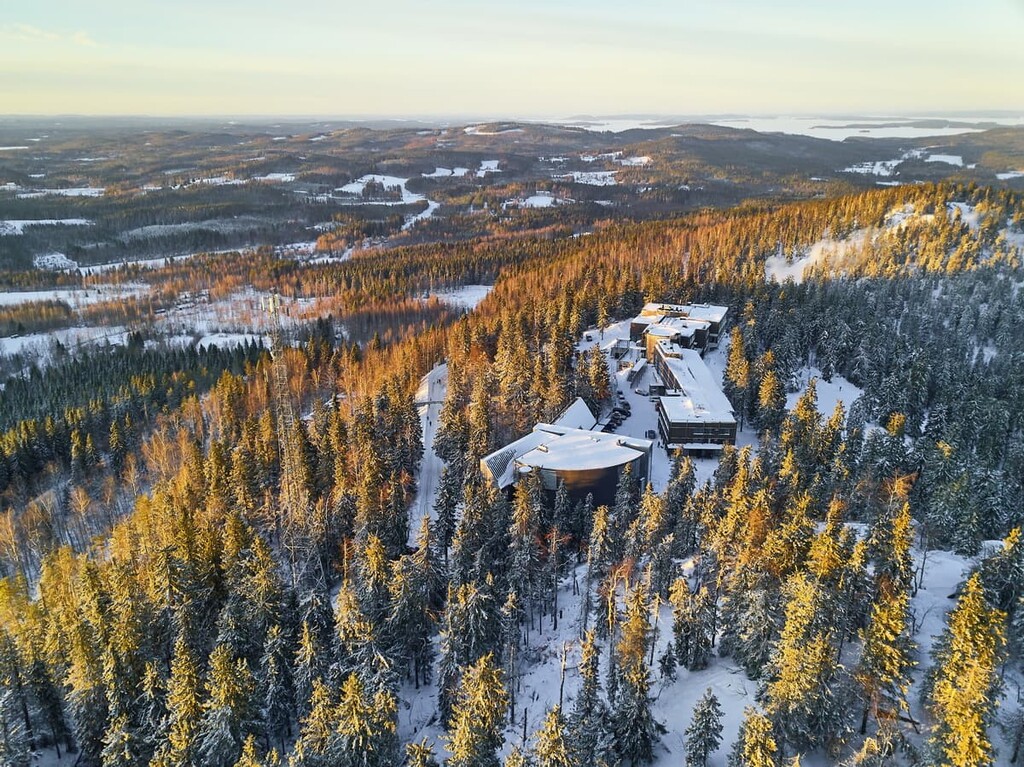
In the heritage Mattila farm, visitors can stay in the two guest rooms or the two-storeyed outbuilding, and/or rent a sauna. Another farmhouse that you can stay at is Paimentupa, which is located on the hillside of Paimenenvaara Hill.
In the northern part of the Koli National Park, in the village center, you will find the Kolin Ryynänen Art and Culture Centre with Kolin Ryynänen Cafe and B&B, Koli local history museum.
Also, there are two camping areas near Koli. The first one is Koli Freetime in Kopravaara, and the second one is Merilänranta.
Finally, the VisitKoli website offers some extra accommodation options in small and terraced apartments at Loma-Koli.
Before and after hiking, you can also easily find any accommodation in Joensuu, Kajaani, as well as other nearby towns.
North Karelia is a region rich in nature, history, and culture, where the main local population calls themselves “Karelians.”
The Karelians are a separate ethnic group, distinct from the Finns, although in many ways, they are very similar. Much of what we know and love about old and modern Finland comes from Karelia. For example, the writer of Kalevala, Elias Lonnrot, collected Finnish legends for the book in Karelia. The famous Finnish rye pies (Karjalanpiirakka) also come from Karelia. There are also the most lakes here.
The closest major city to the park’s borders, Joensuu, is the capital of North Karelia. Actually, this is a very small and very typical Finnish town, located on the Pielisjoki River. It was founded in 1848 by Czar Nicholas I of Russia. The population of Joensuu is 76,833 (March 31, 2021). It is the 12th largest city in Finland.
The city can be visited in a day, including the main architectural and cultural attractions, which include:
For more information, check out the region’s official websites: Joensuu.fi, VisitKarelia.fi.
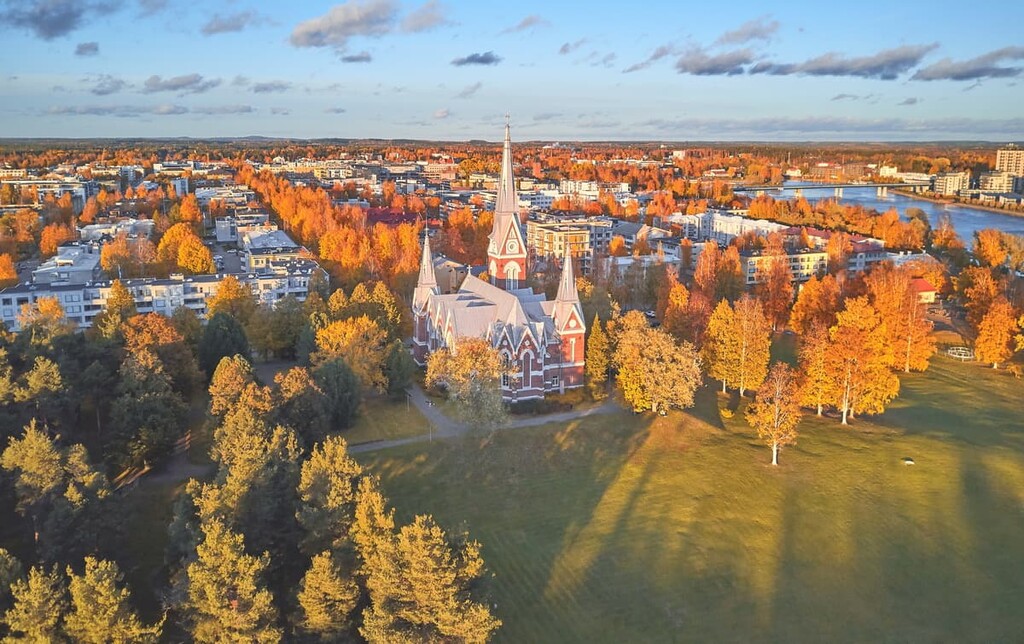
Explore Koli National Park with the PeakVisor 3D Map and identify its summits.








